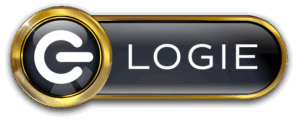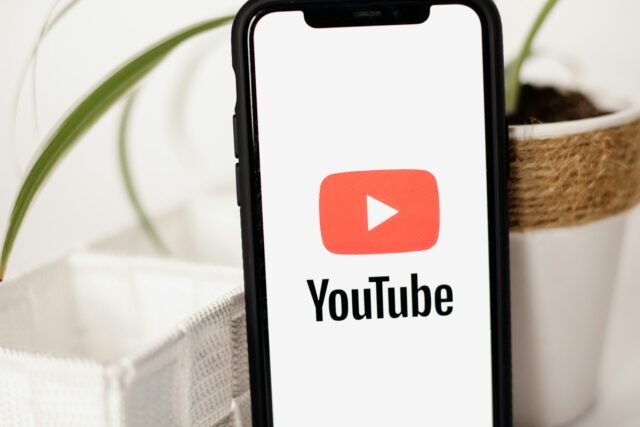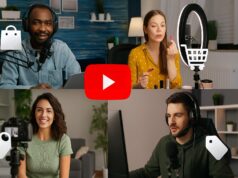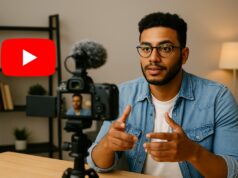The Australian government has sparked a fiery debate with its latest social media regulations, banning users under 16 from accessing platforms like TikTok, Instagram, Snapchat, and Facebook.
But here’s the twist: YouTube, one of the most popular platforms among young people, has been exempted from the ban.
This decision has left tech giants like TikTok, Meta (parent company of Facebook and Instagram), and Snapchat crying foul, accusing the government of playing favourites and undermining fair competition.
By the way, if you want to stay connected and know everything about social commerce and never miss a beat, join Logie today! Click here
A Ban That’s Shaking Up the Social Media World
In one of the most aggressive moves against social media, Australia has passed a law restricting users under 16 from accessing some of the world’s most popular apps.
The goal? To protect young people from the mental health risks and inappropriate content often associated with these platforms. If companies fail to comply, they could face hefty fines of up to about 49.5million(about31 million USD).
The decision reflects growing global concerns about the impact of social media on children’s well-being.

Australian Prime Minister Anthony Albanese defended the move, saying, “We have a duty to protect our children from the risks of social media addiction and harmful content.”
But not everyone is convinced. Critics argue that an outright ban might be an overreach and that better parental controls or education about digital literacy could be more effective solutions.
The YouTube Exception
While TikTok, Meta, and Snapchat are scrambling to comply with the new rules, YouTube has been given a free pass.
The Australian government claims that YouTube serves an “educational purpose” and allows supervised access through family accounts. But this reasoning hasn’t gone down well with other platforms.
TikTok, in particular, has been vocal in its criticism. A spokesperson called the exemption “illogical, anti-competitive, and short-sighted,” pointing out that YouTube uses the same recommendation algorithms, autoplay features, and community interactions as other platforms.
Meta echoed these concerns, arguing that YouTube hosts content that can be just as addictive and potentially harmful to young users.
Even Snapchat, which has invested heavily in youth protection features, chimed in, saying, “No platform should be given preferential treatment when it comes to protecting kids online.”
The message is clear: if the goal is about child safety, why isn’t everyone being held to the same standard?

Tech Giants Push Back
The backlash from social media companies has been swift and fierce. Meta, TikTok, and Snapchat are all calling for a review of the decision, arguing that regulations should be applied evenly across all platforms.
They’re not alone in their concerns. Industry experts and child psychologists have also questioned the logic behind YouTube’s exemption.
Dr. Rachel Connors, a child psychologist specializing in media influence, warns, “The assumption that YouTube is inherently safer is misleading. Kids are still exposed to addictive content loops, inappropriate videos, and exploitative advertising.”
In other words, YouTube isn’t necessarily the “good guy” in this scenario it’s just been given a special pass.
A Global Precedent?
Australia’s social media ban is being closely watched around the world. Governments in the U.S., EU, and Asia are all considering stricter digital regulations, and if Australia’s approach proves effective, it could inspire similar laws elsewhere.
But there’s a catch: enforcing an outright ban isn’t easy. With tools like VPNs and age workarounds readily available, determined teens might still find ways to access their favourite apps.
The controversy over YouTube’s exemption also raises more significant questions about fairness and transparency in tech regulation. Could this set a precedent for selective enforcement in the future? Critics argue that policies should be based on clear, consistent guidelines rather than vague distinctions like “educational value.”
As TikTok, Meta, and Snapchat push back against the ruling, the battle is far from over. Legal challenges and public debates are likely to continue, with industry leaders lobbying for a more balanced approach to digital safety.
For now, Australian teens under 16 will have to say goodbye to their favourite apps except, of course, YouTube, which remains free to keep them hooked on its endless stream of content.












I like the valuable information you provide in your articles.
I’ll bookmark your blog and check again here frequently.
I’m quite sure I will learn many new stuff right here!
Good luck for the next!
I would like to thank you for the efforts you have put in penning this site.
I am hoping to see the same high-grade blog posts from
you in the future as well. In fact, your creative writing abilities has motivated me to get my own website now 😉
Whoa! This blog looks exactly like my old one! It’s on a
entirely different subject but it has pretty much the same page layout and design. Excellent
choice of colors!
Thank you for some other informative website. The place else could I get that kind of
info written in such an ideal method? I have a mission that I am simply now
working on, and I’ve been on the look out for such information.
Asking questions are truly good thing if you are not
understanding anything entirely, but this paragraph presents pleasant understanding yet.
Heya! I know this is sort of off-topic however I needed to ask.
Does building a well-established blog like yours take a lot of work?
I’m completely new to blogging however I do write in my diary every
day. I’d like to start a blog so I can easily share my own experience and views online.
Please let me know if you have any kind of suggestions or tips for
new aspiring bloggers. Appreciate it!
I’m amazed, I have to admit. Rarely do I encounter a blog that’s both educative and amusing, and without a doubt,
you’ve hit the nail on the head. The issue is something too few folks are speaking intelligently about.
I’m very happy I found this in my hunt for something
relating to this.
This paragraph will assist the internet viewers for
building up new blog or even a blog from start to end.
Its such as you read my thoughts! You appear to understand
so much approximately this, like you wrote the book in it or something.
I think that you can do with a few p.c. to drive the message home a bit, however other
than that, this is fantastic blog. A great read. I will definitely be back.